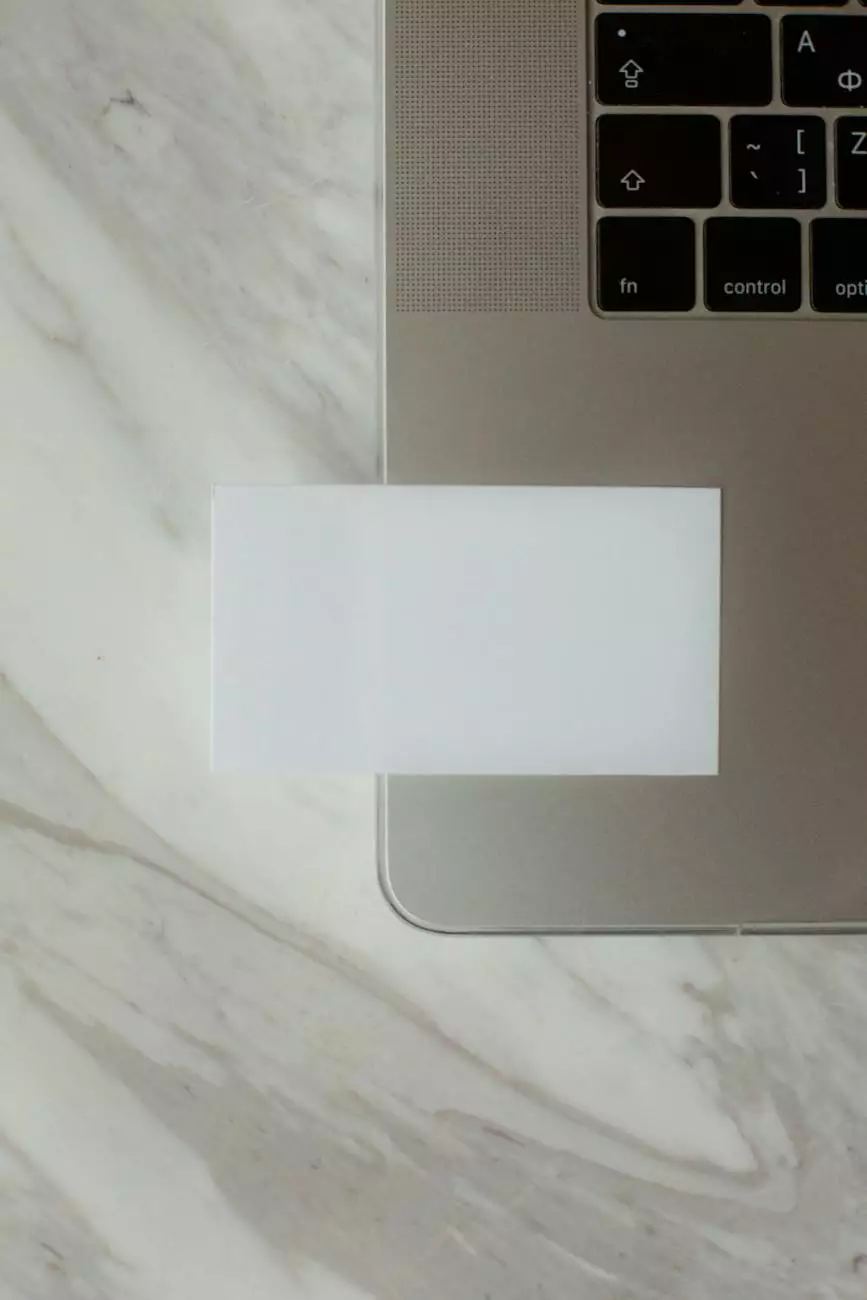SIEM vs SOC - How Do They Work Together?
Blog
Welcome to TNECDA- Creative Design Agency, your go-to resource for innovative solutions in the arts and entertainment industry. In this comprehensive guide, we will delve into the world of cybersecurity and shed light on the roles of SIEM (Security Information and Event Management) and SOC (Security Operations Center) in safeguarding your organization's digital assets.
Understanding SIEM and SOC
In today's digital landscape, where cyber threats are evolving at an alarming rate, organizations must prioritize their security measures. SIEM and SOC are two critical components of a robust cybersecurity infrastructure. Let's take a closer look at each of them:
SIEM: Security Information and Event Management
SIEM, an acronym for Security Information and Event Management, is a technology-driven solution that provides real-time analysis of security alerts and events in an organization's network. It serves as a centralized platform that collects, interprets, and correlates data from various sources, such as firewalls, intrusion detection systems, and antivirus software.
The primary goal of SIEM is to detect and respond to security incidents promptly. By aggregating data from multiple security systems, SIEM helps organizations analyze potential threats, identify security gaps, and mitigate risks effectively.
Some key features of SIEM include:
- Log Collection and Correlation: SIEM collects log data from different security devices, applications, and systems, and correlates them to identify patterns and detect anomalies.
- Real-time Monitoring: SIEM provides real-time monitoring capabilities, allowing security teams to respond swiftly to potential threats.
- Threat Intelligence: SIEM integrates threat intelligence feeds to enhance its detection capabilities and stay up-to-date with the latest threat landscape.
- Compliance Management: SIEM helps organizations meet regulatory compliance requirements by generating reports and providing audit trails.
SOC: Security Operations Center
Now, let's move on to SOC, which stands for Security Operations Center. SOC is a team of cybersecurity professionals who are responsible for monitoring, analyzing, and responding to potential security incidents within an organization.
The SOC's main objective is to ensure the organization's security posture remains robust and constantly evolves to counter emerging threats. It acts as a centralized hub for incident detection, analysis, and response.
Key functions of SOC include:
- Continuous Monitoring: SOC teams continuously monitor network traffic, security alerts, and events to identify potential security breaches.
- Threat Hunting: SOC professionals proactively search for and investigate any signs of malicious activity or potential vulnerabilities.
- Incident Response: SOC personnel develop and execute incident response plans to minimize the impact of security incidents on the organization.
- Forensic Analysis: In the event of a security breach, SOC conducts detailed forensic analysis to determine the root cause, prevent future incidents, and strengthen security measures.
- Collaboration and Reporting: SOC fosters collaboration between different stakeholders and provides comprehensive reports on security incidents, vulnerabilities, and risk assessment.
The Synergy Between SIEM and SOC
SIEM and SOC are two interconnected components of an organization's cybersecurity strategy. While SIEM serves as the technological backbone, SOC ensures the effective utilization of SIEM's capabilities to protect the organization against cyber threats.
The close collaboration between SIEM and SOC helps organizations in the following ways:
Improved Threat Detection and Response
SIEM collects and analyzes vast amounts of security data, but SOC personnel possess the expertise and contextual understanding needed to differentiate between genuine threats and false positives. SOC analysts investigate suspicious activities flagged by SIEM and take appropriate actions, such as incident containment, threat mitigation, and system recovery.
Through the combination of SIEM's technological capabilities and SOC's human intelligence, organizations can detect security incidents in real-time and respond promptly. This helps minimize potential damages and prevents future attacks.
Effective Incident Management and Forensic Investigation
When a security incident occurs, SOC analysts work alongside SIEM to manage the incident effectively. They gather detailed information from SIEM's logs, conduct comprehensive forensic analysis, and determine the scope and impact of the incident.
This collaborative approach ensures that incidents are resolved promptly, vulnerabilities are patched, and necessary measures are implemented to prevent similar incidents in the future. The insights gained from incident investigations also contribute to improving the overall security posture of the organization.
Proactive Threat Hunting and Risk Mitigation
SOC professionals proactively hunt for potential threats and vulnerabilities, leveraging SIEM's capabilities to identify indicators of compromise (IoCs) and other security risks. By conducting proactive threat intelligence analysis, SOC helps organizations stay one step ahead of cybercriminals.
With access to real-time data and insights provided by SIEM, SOC can implement timely risk mitigation strategies, such as updating security policies, patching vulnerabilities, and educating employees on emerging threats.
The Importance of SIEM and SOC in the Arts & Entertainment Industry
The arts and entertainment industry, being highly reliant on digital platforms and sensitive intellectual property, is equally susceptible to cyber threats as other industries. In fact, the industry's creative assets and customer data make it an attractive target for hackers.
By implementing SIEM and establishing a dedicated SOC, businesses in the arts and entertainment sector can protect their valuable assets. These cybersecurity solutions help detect, respond to, and prevent security incidents, ensuring uninterrupted operations, safeguarding customer trust, and preserving the integrity of artistic creations.
Preventing Intellectual Property Theft
Intellectual property, including copyrighted materials, designs, and artistic works, is the lifeblood of the arts and entertainment industry. SIEM and SOC play a crucial role in preventing the theft, unauthorized access, or compromise of these valuable assets.
Through comprehensive monitoring and proactive threat detection, SIEM and SOC help organizations identify potential security breaches, unauthorized access attempts, or suspicious activities targeting sensitive intellectual property. Prompt action can then be taken to neutralize the threat and protect the organization's creative endeavors.
Preserving Customer Privacy
The arts and entertainment industry collects and stores a wide range of customer data, including personal information, payment details, and viewing preferences. This sensitive data must be protected from unauthorized access and potential data breaches.
SIEM and SOC work together to identify and respond to security incidents promptly. By continuously monitoring network traffic and applying advanced analytics, SIEM detects any anomalies or potential risks to customer privacy. SOC analysts then step in to investigate and mitigate these risks, ensuring compliance with data protection regulations and maintaining customer trust.
Ensuring Business Continuity
A security incident or breach can disrupt operations, compromise data integrity, and result in financial losses for arts and entertainment businesses. SIEM and SOC provide the necessary tools and expertise to minimize disruptions and ensure business continuity.
Through proactive monitoring, threat hunting, and incident response, SIEM and SOC help organizations identify and patch vulnerabilities, detect and neutralize threats, and recover systems in the event of an incident. This proactive approach minimizes downtime, preserves brand reputation, and ensures uninterrupted creativity and entertainment for customers.
The Future of Security: SIEM and SOC
The ever-evolving threat landscape demands constant innovation and adaptation in the field of cybersecurity. SIEM and SOC are poised to play an increasingly critical role in securing organizations across industries, including the arts and entertainment sector.
As cyber threats become more sophisticated, SIEM technologies will continue to advance, providing enhanced detection capabilities, improved automation, and seamless integration with other security solutions. SOC teams will grow and refine their expertise to respond effectively to emerging threats, utilizing threat intelligence and staying ahead of cybercriminals.
At TNECDA- Creative Design Agency, we understand the importance of cybersecurity for businesses in the arts and entertainment industry. Our expertise in both visual arts and design, combined with our knowledge of cybersecurity solutions such as SIEM and SOC, enables us to offer holistic security services tailored to your unique needs.
Contact us today to learn more about how we can help you leverage SIEM and SOC to safeguard your organization's digital assets and ensure uninterrupted creativity in a secure environment!










